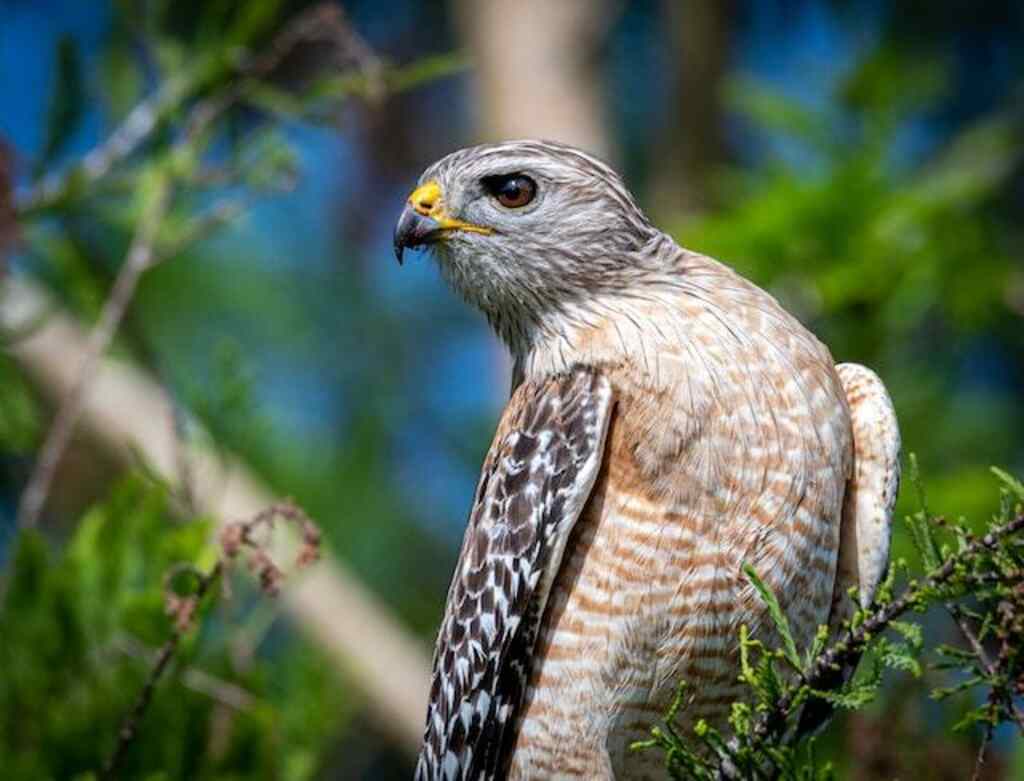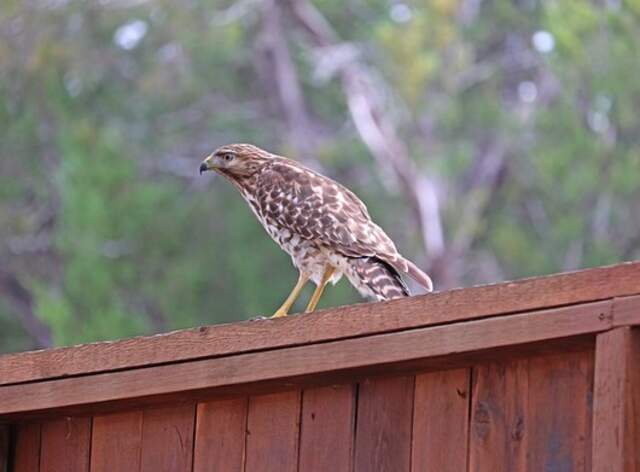Do Hawks Eat Hummingbirds? The answer is a resounding “yes,” but before you panic and start building tiny fortresses to protect your backyard hummingbird feeders, let’s dive into the fascinating world of these feathered speedsters and their interactions with hawks.
Discover the surprising reasons behind this aerial predator-prey relationship and how these delicate little birds manage to outsmart their larger counterparts.
Get ready for a wild ride filled with thrilling chases, daring escapes, and the ultimate battle of wits between giants and tiny dynamos.
Table of Contents
- 1 Brief Overview of Hawks and Hummingbirds
- 2 Common Misconceptions About Hawks and Hummingbirds
- 3 Purpose of the Article
- 4 Hawks and Hummingbirds: A Clash of Titans?
- 5 Diet Variation Among Hawks
- 6 The Impact of Human Activity on Hawk-Hummingbird Interactions
- 7 Conclusion
- 8 FAQs: Do Hawks Eat Hummingbirds?
- 8.1 Can hawks catch and eat hummingbirds?
- 8.2 Why would a hawk target hummingbirds?
- 8.3 Are hummingbirds an easy meal for hawks?
- 8.4 Which hawk species are more likely to eat hummingbirds?
- 8.5 Do hawks actively seek out hummingbirds as prey?
- 8.6 Do hummingbirds have any defense mechanisms against hawks?
- 8.7 How can I protect hummingbirds from hawks in my backyard?
- 8.8 Are there any hawk deterrents to keep them away from hummingbirds?
- 8.9 Will hawks eat hummingbirds even if other prey is available?
- 8.10 What is the overall impact of hawks eating hummingbirds on hummingbird populations?
- 9 Author
Brief Overview of Hawks and Hummingbirds
Hawks are birds of prey that belong to the Accipitridae family. They can be found all over the world, with over 270 species identified so far.
Hawks vary in size from small to large, with some species having a wingspan of up to four feet.
These birds are known for their sharp talons, keen eyesight, and powerful beaks that enable them to hunt prey with great accuracy.
On the other hand, hummingbirds are small birds that belong to the Trochilidae family. There are about 340 known species of hummingbirds, all found only in the Americas.
Hummingbirds are famous for their ability to hover in mid-air as they feed on nectar from flowers using their long bills and tongues.
They also have brightly colored feathers that change color depending on how light reflects off them.
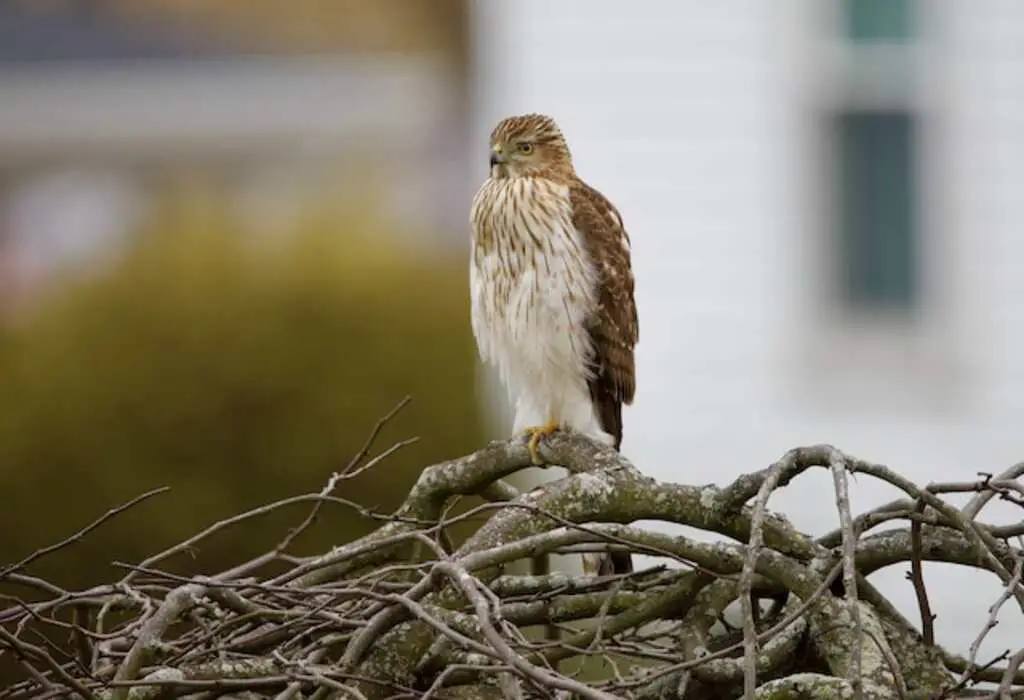
Common Misconceptions About Hawks and Hummingbirds
One common misconception about hawks is that they exclusively eat meat or prey on large animals like rabbits or squirrels.
While it’s true that most hawks do eat meat as part of their diet, including rodents or snakes, as well as other birds such as songbirds or doves.
Some hawk species adapt more flexible diets based upon availability, which includes insects or fish, among others.
Another misconception is around hummingbirds – that they are delicate and defenseless birds, easy prey for hawks.
However, hummingbirds have several built-in defense mechanisms to protect themselves from predators such as hawks.
For example, they are incredibly agile and can fly in any direction at great speed to dodge incoming predators.
Additionally, they often travel in groups or flocks, which increases their chances of survival against lone predators.
Purpose of the Article
The purpose of this article is to provide a comprehensive understanding of the relationship between hawks and hummingbirds.
By exploring their interactions with one another, we will gain insights into how these two species coexist and what threats they face from human activity.
This article will also debunk some common misconceptions about both species that may impact how we view them in our environment.
By the end of this article, readers should have a clearer understanding of the complex relationship between hawks and hummingbirds and be inspired to learn more about wildlife interactions in their local area.
The article aims to raise awareness about these two incredible bird species while emphasizing the importance of conservation efforts to help protect them both for future generations.

Hawks and Hummingbirds: A Clash of Titans?
Hawk Hunting Behavior
Hawks are raptors, a group of birds that hunt and kill prey animals to feed themselves and their young. They use a combination of keen eyesight, powerful talons, and sharp beaks to capture and kill their prey.
Hawks have evolved to specialize in hunting various types of prey, including rodents, snakes, rabbits, fish, and even other birds.
Some hawks are ambush predators that wait for their prey to come within striking distance before pouncing on them with lightning-fast speed.
Other hawks are aerial hunters that soar high in the sky until they spot their target below.
When hunting hummingbirds specifically, hawks may use a variety of tactics depending on the species they are targeting.
For example, some hawks will perch near hummingbird feeders or flowers where hummingbirds gather to feed.
Others will fly low over open areas where hummingbirds are known to forage for insects or nectar.
Once they have located a potential target, the hawk will swoop down at high speeds, using its talons to catch the hummingbird mid-flight.
Hummingbird Defense Mechanisms
Despite being small and delicate-looking creatures compared to hawks, hummingbirds have evolved some impressive defense mechanisms to protect themselves from predators such as hawks.
One such mechanism is their speed – hummingbirds can fly at speeds up to 60 miles per hour (96 km/h) or more thanks in part to their unique wing structure which allows them to hover in place or move rapidly in any direction.
Another defense mechanism is their agility – hummingbirds can change direction quickly while flying, which makes them difficult targets for predators like hawks, who rely on speed and surprise attacks.
Additionally, many species of hummingbird have brightly colored feathers or iridescent plumage, which may be used as a form of visual deterrent to potential predators.
Do Hawks Eat Hummingbirds?
Yes, hawks do eat hummingbirds. While hawks primarily feed on small mammals and birds, including hummingbirds, their diet varies based on species and location.
Hummingbirds are not immune to hawk predation, but the likelihood of a hawk preying on a hummingbird depends on factors such as habitat, hunting behavior, and availability of alternative prey.
The Likelihood of a Hawk Preying on a Hummingbird
While it is true that hawks are known to prey on hummingbirds, it is not as common as some may believe. The likelihood of a hawk preying on a hummingbird depends on several factors including the type of hawk, the location and habitat, and the availability of other prey.
Some species of hawks are more likely to go after hummingbirds than others – for example, sharp-shinned hawks and Cooper’s hawks are both known to be opportunistic hunters that will target smaller birds such as hummingbirds.
However, even if a hawk does attempt to hunt a hummingbird, it may not always be successful due to the bird’s agility and speed.
Additionally, many species of hummingbirds have evolved behaviors that help them avoid predation such as perching in areas with good visibility or taking cover in dense vegetation when threatened.
Overall, while it is possible for hawks and hummingbirds to come into conflict with each other in certain situations, these interactions are relatively rare and do not pose a significant threat to either species’ populations.
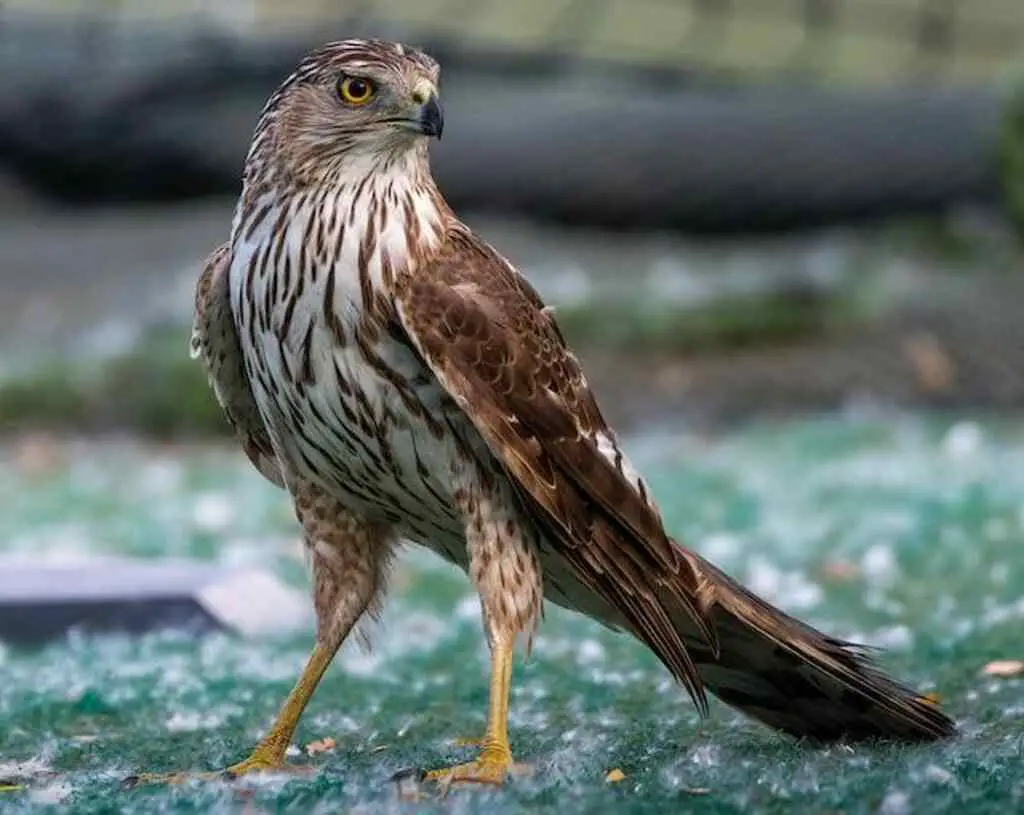
Diet Variation Among Hawks
Different Types of Hawks and Their Diets
There are numerous species of hawks that inhabit various parts of the world. Each type has its own preferred diet, ranging from small rodents to reptiles and even other birds.
The most common types of hawks in North America include Cooper’s hawk, Red-tailed hawk, Sharp-shinned hawk, and Northern Goshawk.
These raptors have different hunting habits and preferences when it comes to prey species.
Cooper’s hawks primarily hunt smaller birds like doves and sparrows, while Red-tailed hawks feed on larger prey such as rabbits and squirrels.
Sharp-shinned hawks are smaller than other species but are known for their agility in catching birds on the wing, including hummingbirds.
Northern Goshawks are a forest-dwelling species that preys on medium-sized animals like rabbits, squirrels, and even porcupines.
Factors That Influence a Hawk’s Diet – Location & Seasonality
A hawk’s diet varies depending on where they live or hunt. For example, a Red-shouldered hawk living near wetlands will have access to fish as part of its diet, while those residing in grasslands rely more heavily on small mammals.
Seasonality also plays an important role in determining a hawk’s diet.
During winter months, when food sources may be scarce or less accessible due to snow cover or migration patterns of other prey species, some hawks may switch to scavenging or resorting to alternative food sources such as roadkill or human-provided food.
The Role of Hummingbirds in a Hawk’s Diet
While hummingbirds aren’t typically a common prey item for most raptor species – they play an essential role in their diets during certain times of the year.
For instance, Sharp-shinned hawks that breed in the Pacific Northwest rely heavily on Rufous Hummingbirds during their migration from Alaska to Mexico.
Hummingbirds are also an essential food source for some hawk species during breeding season, when they need to feed their young.
Cooper’s hawks, for example, have been observed feeding young with hummingbirds.
However, this behavior is not common across all hawk species and may be influenced by the availability of other prey items in their environment.
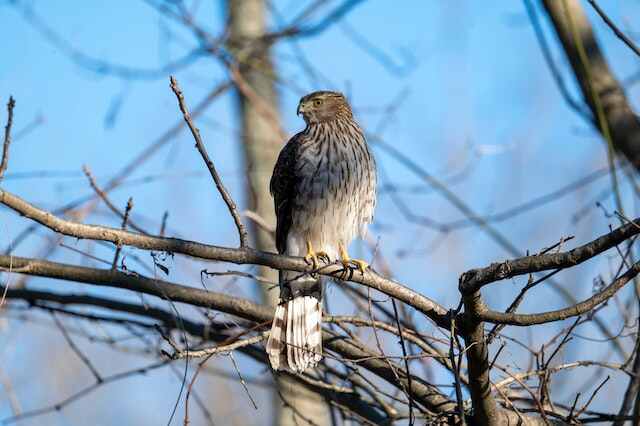
The Impact of Human Activity on Hawk-Hummingbird Interactions
Human activity has drastically altered the natural landscape, resulting in changes to habitat that impact all species living within it. Hawks and hummingbirds are no exception.
The destruction of forests, wetlands, and other natural habitats has limited the availability of resources for both hawks and hummingbirds, forcing them to compete for food and shelter.
Changes in Habitat Due to Human Activity
One major way human activity affects hawks and hummingbirds is through changes to their habitat. Deforestation, urbanization, and agriculture have all led to significant losses in natural habitats that these birds rely on.
The removal of trees and other vegetation reduces nesting sites for both species. This has a particularly negative impact on hummingbirds who prefer nesting in trees and shrubs near sources of nectar.
Hawks also suffer from habitat loss as they require open areas with a mix of grasslands, wetlands, and forests for hunting success.
These areas are becoming scarce due to urban developments taking over these regions.
How Human-Provided Food Sources Impact Hawk-Hummingbird Interactions
In addition to altering habitat availability, human-provided food sources have also impacted hawk-hummingbird interactions.
Hummingbirds are drawn to bird feeders filled with sugar water, which can lead them into proximity with predatory hawks, who may view them as prey.
Moreover, feeding stations offer an easy meal for predators such as Cooper’s hawks at bird feeders, who use the feeders as an opportunity for ambush attacks on unsuspecting prey near the feeder area.
Ways to Mitigate Negative Impacts on Both Species
There are several ways humans can help mitigate the negative impacts of human activity on hawk-hummingbird interactions.
Creating wildlife-friendly environments by planting native plants that provide food and shelter for both species is one of the best things people can do.
Bird feeders can also be modified to minimize the risks of predation by placing them near trees or shrubs to provide cover for hummingbirds or avoiding feeding stations altogether in areas where hawks are known to hunt.
It is also essential to ensure that urban developments take into account wildlife habitats and that farmers implement land use practices that promote biodiversity.
These measures will go a long way towards preserving hawk and hummingbird populations, while also benefiting other species struggling with habitat loss due to human activity.
Conclusion
Throughout this article, we have explored the complex relationship between hawks and hummingbirds. While it is true that hawks are predators and have been observed preying on hummingbirds, it is important to consider the larger picture of their interactions.
Factors such as habitat availability and diet variation among hawk species influence the likelihood of a hawk preying on a hummingbird.
The Importance of Understanding this Relationship for Conservation Efforts
Conservation efforts aimed at protecting wildlife populations must take into account all aspects of an animal’s ecology, including predator-prey relationships.
By understanding how hawks and hummingbirds interact, we can better design conservation strategies that balance the needs of both species.
For example, providing alternate food sources for hawks to reduce their reliance on hummingbirds could help protect these beautiful birds while also supporting healthy predator populations.
Encouraging Further Learning About Wildlife Interactions
We encourage readers to continue learning about wildlife interactions in their local area by observing these animals in their natural habitats with respect and caution.
As we gain a deeper understanding of how different species interact with one another, we can make informed decisions about how best to conserve our planet’s diverse array of life forms.
The Hopeful Outlook for Hawk-Hummingbird Interactions
Despite some instances where hawks may prey on hummingbirds, there is great potential for coexistence between these two fascinating groups of birds.
With careful management and continued scientific research, we can work towards creating environments where both species thrive together.
We hope this article has inspired you to appreciate the beauty and complexity of nature’s relationships – including those between hawks and hummingbirds!
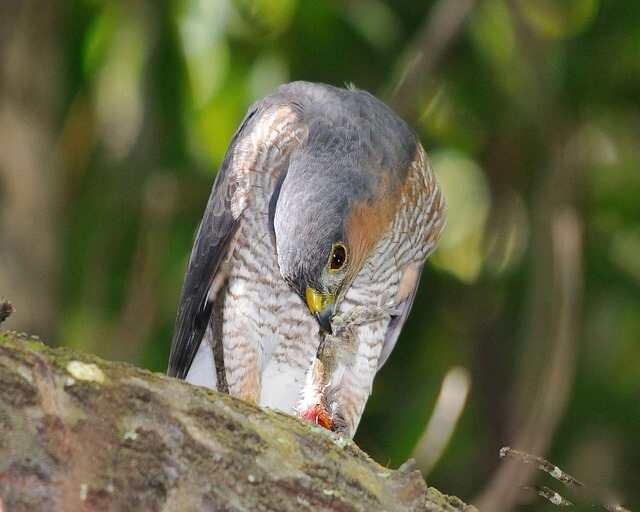
FAQs: Do Hawks Eat Hummingbirds?
Can hawks catch and eat hummingbirds?
Yes, hawks are capable of catching and consuming hummingbirds, although the frequency of such predation can vary.
Why would a hawk target hummingbirds?
Hawks target hummingbirds due to their small size and availability as potential prey, especially in areas where hummingbirds are abundant.
Are hummingbirds an easy meal for hawks?
Hummingbirds are agile and have evasive flight patterns, making them challenging targets for hawks. However, under certain circumstances, hawks can successfully capture hummingbirds.
Which hawk species are more likely to eat hummingbirds?
Hawk species that specialize in hunting small birds or have a diverse diet including small birds are more likely to prey on hummingbirds.
Do hawks actively seek out hummingbirds as prey?
Hawks do not actively seek out hummingbirds specifically, but if the opportunity arises, they may take advantage of catching a hummingbird.
Do hummingbirds have any defense mechanisms against hawks?
Hummingbirds have various defense mechanisms, such as their small size, agility, quick flight, and territorial behavior, which can help them evade hawk attacks.
How can I protect hummingbirds from hawks in my backyard?
Providing ample cover with trees, shrubs, or feeders placed strategically can offer hummingbirds protective spaces and reduce the likelihood of hawk attacks.
Are there any hawk deterrents to keep them away from hummingbirds?
While no foolproof method exists, visual deterrents like reflective objects or scare devices can help deter hawks from frequenting areas where hummingbirds gather.
Will hawks eat hummingbirds even if other prey is available?
Hawks generally prefer a diverse diet, but if hummingbirds are easily accessible or their preferred prey is scarce, they may resort to hunting hummingbirds.
What is the overall impact of hawks eating hummingbirds on hummingbird populations?
Although individual predation events occur, the overall impact of hawks on hummingbird populations is minimal, as hummingbirds possess robust breeding abilities and face various other ecological pressures.

